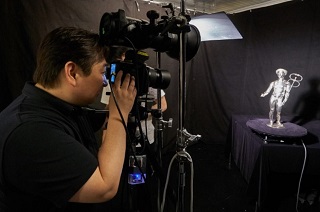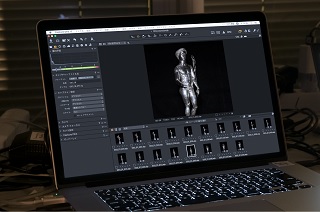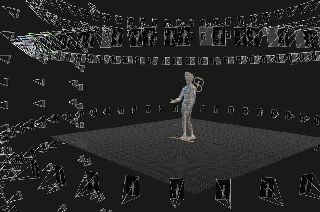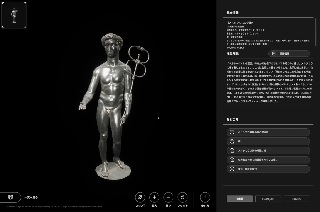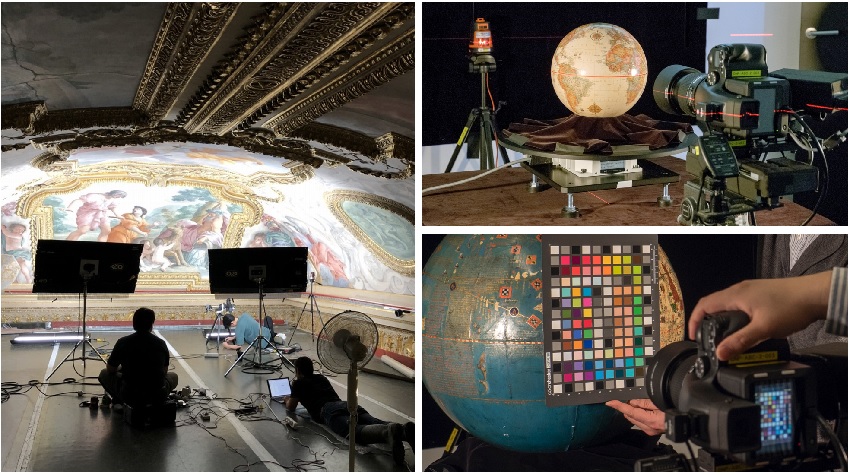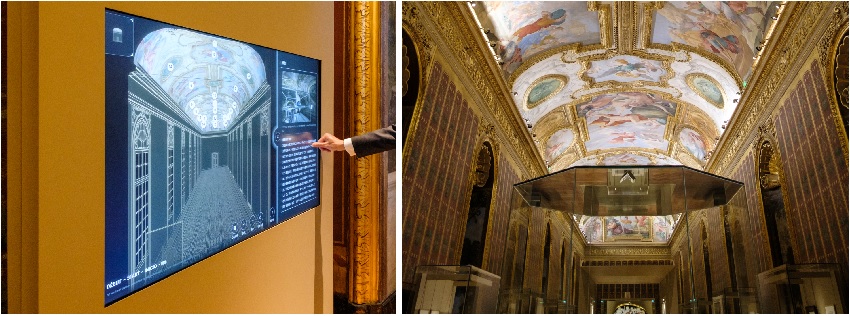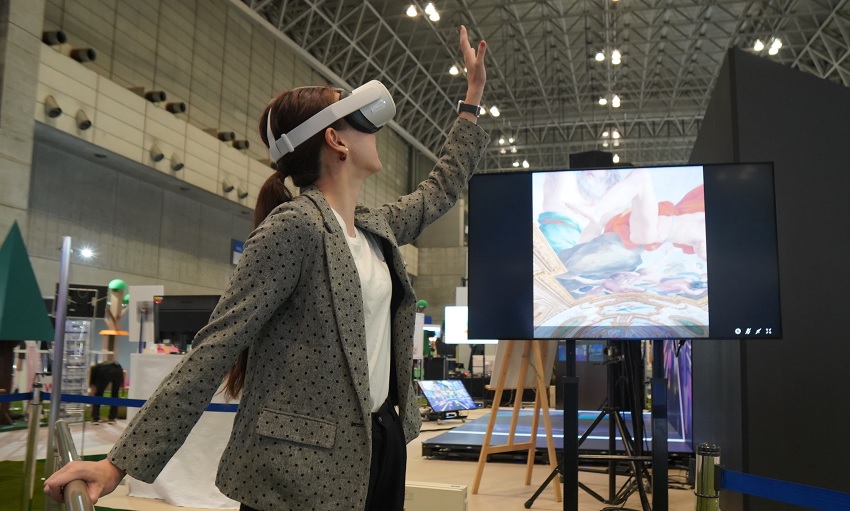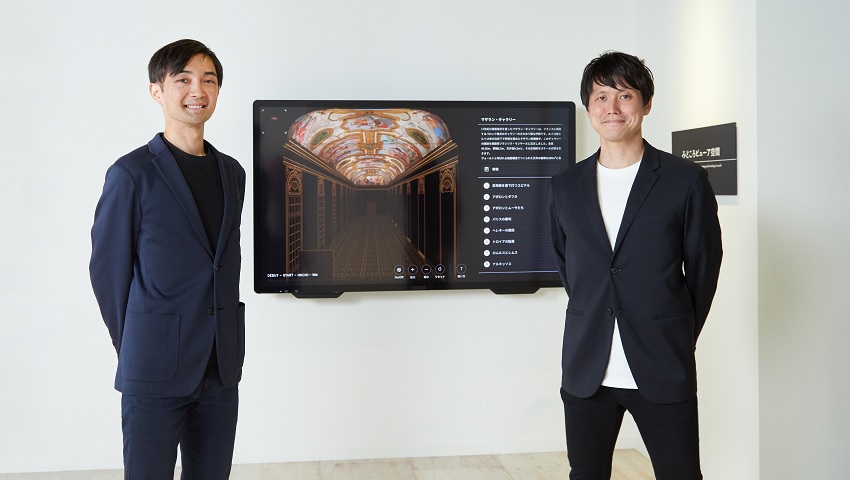
DNP’s Viewing Systems Deliver New Cultural Experience Tailored to Individual Interest
DNP has equipped a museum in the Richelieu site of Bibliothèque nationale de France (BnF) in Paris with interest-provoking, interactive art viewers it developed. The museum reopened on September 17, 2022, after undergoing its first major renovation since being founded in 1721. These “Midokoro viewers*1” harness DNP’s superb photogrammetry technology that successfully digitalizes art pieces in 3D, including those with materials that reflect light, and capture details of huge spaces — tasks previously considered technologically difficult. Furthermore, the viewers enable individuals to appreciate cultural pieces with their experience design that incorporated the verified results of research on human behavior, including how people react after something piques their interest. We interviewed Kimitaka Hirasawa and Shintaro Tai, who are both from the Cultural Business Unit and played central roles in this joint DNP-BnF project, to discuss what makes DNP’s viewing and interactive content systems special. (*1: Midokoro viewer is an interest-sparking space/artifact viewing tool that invites users to touch the screen to learn more.)
- BnF adopts DNP’s art viewers
- Sparking viewers’ interest with experience design based on cognitive science
- Systems to be introduced mainly in domestic MLA but also in education
- Significance of cultural activities, possibility of interactive content as DNP sees them
What is photogrammetry?
Photogrammetry is a technology that generates three-dimensional computer graphics by taking multiple pictures of an object from various angles and analyzing these digital images. 3DCG can be easily generated with the use of a camera, computer and special software. The technology’s uses include virtual reality (VR) content and game software; recreating scenes of accidents and crimes in forensic analyses; and the maintenance of buildings, bridges and other structures.
A photographer takes photos of an object from various angles.
|
#1 |
#2 |
Special software generates a 3D model from multiple still photos, recreating its shape and texture.
|
#3 |
#4 |
BnF adopts DNP’s art viewers
In September 2019, DNP participated in the “Richelieu Renaissance Project,” a major renovation of BnF’s Richelieu site, as the only technical mécénat*2 partner from Asia. The key to DNP’s participation was its expertise in photogrammetry technology and know-how on designing viewing experiences. This technology is capable of recreating the shape of artworks featuring light-reflecting materials and the fine details of a vast space, which previously were difficult, if not impossible, to digitalize in 3D. The technology allows artworks to be observed from different angles and in different sizes – an experience viewers cannot have when appreciating art conventionally with real objects.
- *2: Mécénat is artistic and cultural patronage by a company
|
Left: #5, Right: #6 |
“Our photogrammetry technology can precisely recreate an object’s shape and texture,” Shintaro Tai said. “We can provide a high-quality recreation of an object, be it a small item or a large space.” According to Tai, BnF was impressed by the DNP technology that generates highly precise 3DCG by capitalizing on its know-how as a printing company, such as the optimization of lighting, other photography conditions, and color control. DNP’s experience design, which can boost viewer interest toward artworks, also was highly evaluated, he added.
|
Left: Photographers take pictures of a large space at Mazarin Gallery. (#7) |
DNP’s endeavors to enhance cultural experiences through digital technology date back to 2006, when it participated in a joint project with Louvre Museum in France called “Louvre-DNP Museum Lab.” DNP held an exhibition in its Gotanda, Tokyo, building to showcase its expertise, introducing the highlights and historical background of artworks at the Louvre, with the use of touch-panel displays alongside the actual artworks that were also displayed. DNP also developed and introduced interactive digital content, such as one allowing viewers to experience making an artwork by themselves. Some of the viewing systems were temporarily installed at the Louvre and other locations.
These systems caught the attention of BnF officials, who later contacted DNP. In 2015, DNP and BnF started using photogrammetry technology for the 3D digitalization of 55 globes and celestial globes of historical significance from the BnF collection. Expertise accumulated through this project provided the foundation for the technology powering the latest viewers that were installed at the Richelieu site.
The viewers were installed at two locations: Mazarin Gallery and Salon Louis XV. The one at Mazarin Gallery, whose ceiling is adorned by frescoes, a 17th-century masterpiece by Italian artist Giovanni-Francesco Romanelli and his studio, has proven particularly popular. The painting — which is about 45 meters long, about 8 meters wide and on a ceiling — is based on Greek and Roman mythology described in Roman poet Publius Ovidius Naso’s Metamorphoses. Its location 9 meters above the floor makes it difficult to get a close view of the masterpiece. The viewer with a 55-inch touch panel display, however, can do this with ease: The painting can be viewed from various angles and at various sizes. Many visitors to the gallery enlarge sections of the recreated fresco that interest them on the display, while comparing with the real painting on the ceiling, reading explanations about scenes in the mythology and checking where repairs have been made.
|
Left: The viewer installed at Mazarin Gallery (#9) |
A 24-inch touch panel display at Salon Louis XV, where paintings, furnishings and room decorations were repaired in the project, enables visitors to see its structure in addition to highlights of a 18th-century royal collection of paintings and furnishings.
|
Left: The viewer installed at Salon Louis XV (#11) |
“The Richelieu site has passed on possessions of Louis XIV and XV to generation after generation, and the collections indeed embody French history,” Tai said. “BnF officials devote themselves to conveying the special qualities of these artworks to the world through the preservation, research and exhibition of the works. I am honored to have helped with their mission.”
- *3: A video explaining the joint project with BnF. Collaboration between BnF and DNP
Sparking viewers’ interest with experience design based on cognitive science
The “Midokoro viewer” is one system in the DNP's interactive content series. It is designed to spark greater interest in artworks by providing both digitalized data and highlights of the presented artworks based on the vast knowledge of museums, libraries and archives (MLA). In addition to the viewer, five systems including “Midokoro cube*4” and “Midokoro walk*5” have been developed.
- *4: Midokoro cube is an interest-sparking art viewing tool that allows users to gain information related to the art pieces and artifacts they are viewing.
-
*5: Midokoro walk is an interest-sparking art viewing tool that allows users to explore and walk-through virtual spaces.
- *6: For details about the DNP's interactive content series, click here (in Japanese only).
|
Shintaro Tai of the Cultural Business Unit, Marketing Division |
Experience design based on cognitive science is central to this series. The major goals of experience design are:
・Entice visitors to touch a screen by making the initial screen animated.
・Spark viewers’ interest and encourage them to touch the screen, so viewers find the section that provides the desired details.
・Allow viewers to understand how to operate the system and remember the information they gained while using it.
Tai, together with Kimitaka Hirasawa, held repeated discussions with specialists on cognitive science and human engineering at DNP’s Human Engineering Lab to complete the experience designs used in the series.
Tai and Hirasawa have verified the effectiveness of the experience designs at a public event showcasing the systems at DNP Museum Lab. “We observed how visitors used the systems and surveyed some of them,” Hirasawa said. “We found that many visitors actively sought and obtained information they wanted — just as we designed.”
Although BnF did not introduce the “Midokoro walk,” this system was particularly popular among visitors to the event held at DNP Museum Lab. Visitors can “walk through” a virtual gallery by wearing a VR headset and move along an actual handrail. The system’s redirected walking technology*7 creates a feeling of walking in a spacious virtual environment, even though the user is actually moving within the limited exhibition space. Cross-modal perception*8 using the handrail’s texture and sound effects helps visitors have a new experience involving different sensory modalities.
- *7: Redirected walking technology is a virtual reality locomotion technique to enable people to feel as if they are walking through a spacious virtual environment while actually moving in a small space. Manipulations applied to the displayed scene forces the user to compensate by reorienting themselves to maintain their intended walking direction in the virtual environment. Such manipulations cannot be noticed by the user. Letting the user actually walk lessens VR sickness and enables the user to reorient themselves more accurately in the virtual environment. Development of this technology was supervised by Associate Professor Takuji Narumi and Assistant Professor Keigo Matsumoto of the University of Tokyo’s Kuzuoka-Amemiya-Narumi Lab.
- *8: Cross-modal perception occurs when two or more senses interact with each other, triggering a condition in which the stimulus of one sensory system leads to an involuntary response by another.
Systems to be introduced mainly in domestic MLA but also in education
DNP has conducted joint projects so far with the Louvre, BnF and other overseas MLA, but Hirasawa says DNP will now concentrate on joint projects in Japan, in particular regional areas, to promote domestic cultural activities. DNP aims to help locals and tourists alike to enjoy Japan’s cultural heritage by sharing information on the possessions of domestic MLA through digitalization and adding new value to the digitalized data. DNP is conducting such a project commissioned by Isedotai Jomon Museum which showcases artifacts from the Isedotai remains, a World Heritage site in Kita-Akita City, Akita Prefecture.
|
Kimitaka Hirasawa of the Cultural Business Unit, Marketing Division |
“Each region has its own unique culture,” Hirasawa said. “Expressing culture as the pride of local residents and passing it to future generations is important in our activities. I’d like the Kita-Akita project to help as many people as possible to learn about this precious culture. People will feel a closer affinity for the place where they live if their culture is preserved as easy-to-understand data. I also want to awaken their pride in their own region.”
Hirasawa also believes in the potential of digital interactive systems in education. “Children have differing interests,” he said. “In particular, we must provide children with various approaches to appreciating art so they find something that intrigues them. An interactive content system is very effective in this respect.”
In December 2022, DNP started a demonstration experiment involving the “Midokoro cube,” which places digitalized images and text on the three-dimensional coordinate axis(cube) on the system, at an elementary school. DNP will verify what changes are detected in students’ understanding levels and attitude toward learning after they actively study regional history with the system. Furthermore, DNP plans to promote wider use of its interactive content systems in education after conducting further analysis so that more students will have affection for and pride in their hometowns.
Significance of cultural activities, possibility of interactive content as DNP sees them
DNP set an eye on introducing its interactive content system, which can be applied in new viewing styles and fields other than art and culture, to the metaverse market that is expected to expand rapidly. In particular, the “Midokoro walk” system has been applauded by Facebook Japan, which is shifting its focus on social media to the metaverse domain. One Facebook Japan official said, “The high quality of recreated artworks surpasses everything we have seen.” The system, which uses Meta Quest, a head-mounted display produced by Meta, was exhibited at Facebook Japan’s exhibition site at CEATEC 2022, an advanced technology exhibition held in Chiba City, Chiba Prefecture, in November 2022. It demonstrated the growing hopes for the system’s application in the metaverse.
|
#13 |
Furthermore, DNP has long operated galleries that specialize in graphic art in Tokyo and Kyoto
. DNP also engages in various cultural activities, including Kyoto Cultural Heritage Archive Project
, which is designed to preserve Kyoto’s cultural heritage for future generations. These activities encapsulate the founding spirit of Shueisha, one of DNP’s predecessors: “Contribute to enhancing people’s knowledge and culture through letterpress printing.”
Tai and Hirasawa both aim to improve the interactive viewing system and facilitate activities to preserve cultural assets, pass them down to future generations and put them on public display. Doing so, they believe, will make cultural promotion activities more effective and enable more people to easily experience and learn about their culture.
- *9 Image #1#8 : ©David Paul Carr / BnF
- *10 Image #2#3#4#5#6#7#13 : ©DNP Dai Nippon Printing Co., Ltd. 2021, - with the courtesy of the Bibliothèque nationale de France.
- *11 Image #9#10#11#12 : ©DNP Dai Nippon Printing Co., Ltd. 2022, - with the courtesy of the Bibliothèque nationale de France.
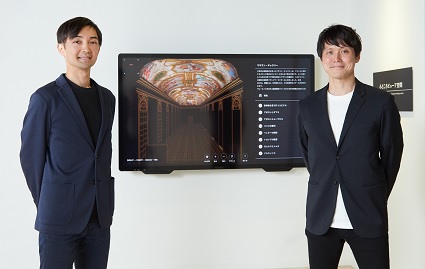
|
|---|
<Profile>
Shintaro Tai, left, and Kimitaka Hirasawa, right
Cultural Business Unit, Marketing Division
Dai Nippon Printing Co., Ltd.
- *DNP department names, product specifications and other details are correct only at the time of writing. They are subject to change without prior notice.
June 27, 2023 by DNP Features Editorial Department
